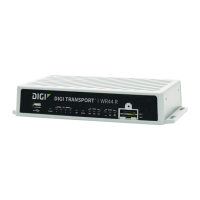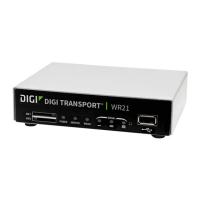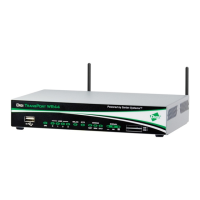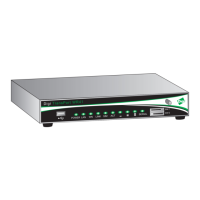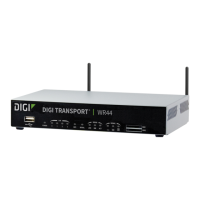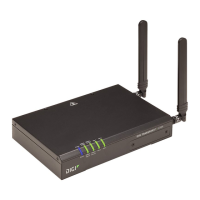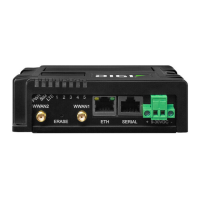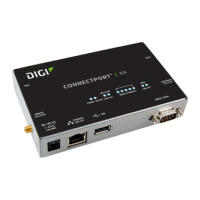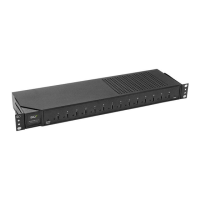Configuring UDP echo Configure a UDP echo client
Digi TransPort® Routers User Guide
567
Configure a UDP echo client
When enabled, the UDP echo client generates UDP packets that contain the router’s serial number
and ID and transmits them to the IP address specified by the configuration. When the remote router
receives a UDP packet on a local port and UDP echo server is configured, it will echo the packet back
to the sender. There may be more than one UDP echo instance available on the router. When
specifying the local port to listen on, the router uses Instance 0.
É
Web
1. Go to Configuration > Network > UDP Echo. Depending on your router model, there may be
instances of the UDP echo task supported by the router. Each has its own configuration web
page, described below. For the command line configuration, valid instance numbers start at 0.
2. Configure the UDP echo parameters:
Enable UDP Echo
This setting is disabled by default. When enabled, the configuration parameters associated
with send UDP echo packets are displayed.
Send a UDP packet to IP address a.b.c.d port n every s seconds
The values in these three text boxes define the destination IP address for the UDP packets, the
port number to which they should be sent and the sending interval. If the destination IP
address is left blank, the router will not attempt to send any packets.
Use local port n
The local port the router should listen on for UDP packets. If any UDP packets are sent to this
port, the router will send a copy back to the IP address and port they were sent from.
Route via Routing table / Interface x,y
These two radio buttons select whether the router should use its routing table to determine
how to send the UDP packets or whether it should use the specified interface. If the specific
interface is selected, the interface is selected from the drop-down list. The options available
are PPP and Ethernet. The interface instance is specified in the adjacent text box.
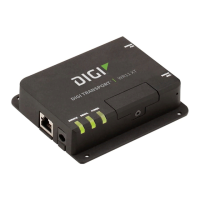
